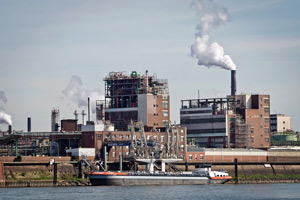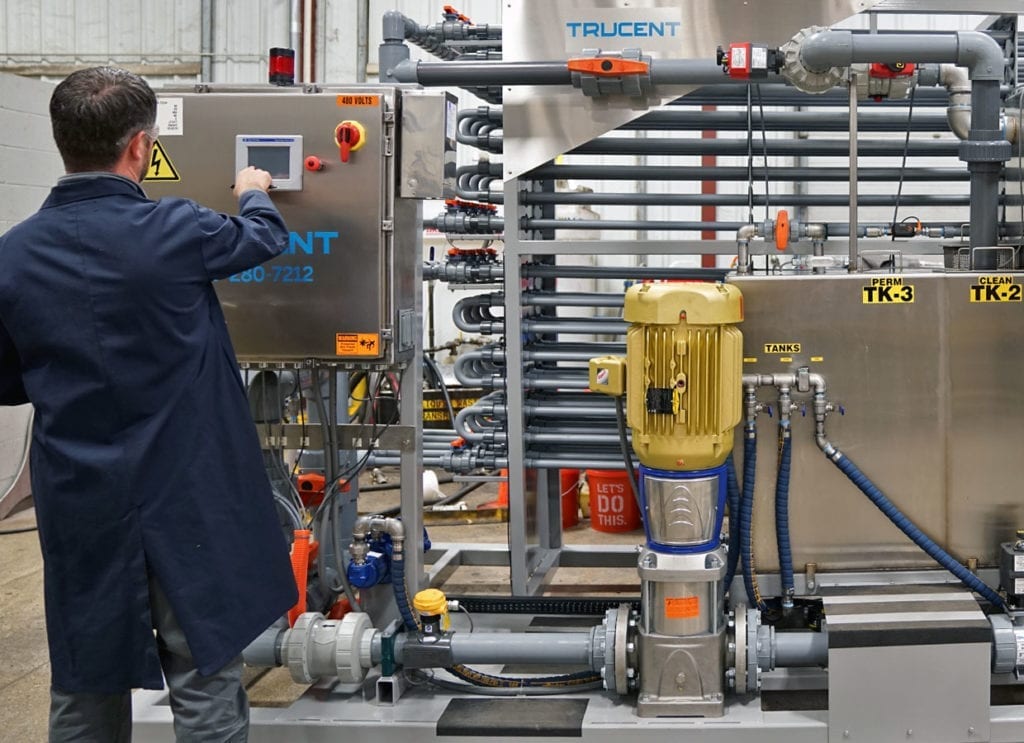Obstacles and Solutions in Industrial Waste Water Therapy
The therapy of industrial wastewater presents a multifaceted array of obstacles, varying from rigorous regulatory conformity to the ins and outs of expense management and technical constraints. The irregularity in waste make-up better makes complex the effectiveness of traditional therapy techniques, frequently resulting in risen operational expenditures.
Regulatory Compliance Obstacles
Just how can industrial facilities navigate the complex landscape of governing compliance in wastewater treatment? The governing framework controling wastewater management is diverse, frequently differing by jurisdiction and type of sector.
To effectively handle these conformity obstacles, facilities need to implement robust surveillance and reporting systems that ensure real-time data collection and evaluation. Normal audits and danger analyses can identify prospective conformity voids, enabling positive adjustments in treatment procedures. Staff member training programs concentrating on regulatory understanding and finest methods are vital to promote a culture of conformity within the organization.
Furthermore, involving with governing companies can give useful understandings and clear up unclear regulations. Facilities may likewise take advantage of consulting with environmental specialists who concentrate on wastewater therapy compliance, making certain that they stay abreast of advancing policies. By adopting these approaches, industrial facilities can not just fulfill compliance demands yet also enhance their functional performance and environmental stewardship.
Cost and Economic Obstacles
Browsing governing conformity in wastewater therapy frequently provides substantial economic challenges for industrial facilities. The costs related to carrying out essential therapy technologies, maintaining compliance with strict policies, and handling functional expenses can be intimidating. Numerous organizations encounter high initial capital expenditures for the construction or upgrading of wastewater treatment plants, which may strain spending plans, especially for medium-sized and small ventures.
Furthermore, ongoing functional prices, including chemical, upkeep, and labor inputs, add to the monetary burden. The unpredictability of fluctuating power rates and the possible requirement for extra investments to meet developing guidelines aggravate these financial pressures. In a lot of cases, the absence of monetary incentives or assistance from federal government bodies makes it even more tough for organizations to validate financial investments in sophisticated treatment systems.
In addition, the financial practicality of wastewater therapy options is typically examined, specifically for sectors with tight earnings margins. As a result, it is vital for commercial facilities to discover economical techniques, such as taking on ingenious financing choices, engaging in collaborations, and leveraging arising innovations that can help alleviate these economic obstacles while ensuring conformity with environmental standards.

Technical Limitations
Countless technical constraints impede the effectiveness of commercial wastewater therapy processes. One significant obstacle is the inadequacy of existing therapy innovations to deal with complex impurities. Numerous conventional approaches, such as triggered sludge and chemical precipitation, battle with the elimination of emerging pollutants, consisting of microplastics and drugs. This limitation often leads to the discharge of improperly treated water, which can have detrimental ecological impacts.
Additionally, the scalability of therapy technologies presents a challenge. While some innovative techniques, like membrane layer filtration or sophisticated oxidation, show guarantee in regulated environments, their application on a larger range can be prohibitively costly and practically challenging. Upkeep and operational intricacies further complicate the adoption of these systems, specifically for smaller sized industries with minimal technological knowledge.
The combination of real-time surveillance technologies likewise stays insufficient in numerous therapy facilities. Without effective monitoring systems, operators can not properly examine therapy performance or spot prospective failings, causing irregular effluent top quality. Dealing with these technological limitations with research study and advancement, together with investment in innovative solutions, is essential for enhancing the efficacy of industrial wastewater therapy and making certain governing conformity.
Variability in Waste Composition
In the realm of commercial wastewater treatment, the variability in waste structure offers a powerful challenge. Industries produce wastewater with varied features, influenced by aspects such as production processes, resources, and operational methods. This heterogeneity complicates the therapy process, as standard systems usually have a hard time to efficiently address the large variety of pollutants existing.
For instance, wastewater from food handling may contain high levels of natural issue, while effluents from chemical manufacturing can include unsafe compounds and heavy metals. This variance requires versatile treatment approaches to make sure compliance with ecological policies and shield public health. In addition, fluctuations in waste structure can occur gradually, affected by changes in manufacturing timetables, maintenance tasks, or the intro of new items.

Innovative Therapy Solutions
Innovative treatment remedies are important for resolving the complexities of industrial wastewater administration. Typical methods usually fall brief in efficiently getting rid of a large range of pollutants, specifically in facilities with varied effluent streams. Current innovations focus on incorporating cutting-edge innovations to improve therapy efficiency and sustainability.
One promising technique is the usage of innovative oxidation procedures (AOPs), which take advantage of effective oxidants to degrade organic contaminants. AOPs, consisting of photocatalysis and ozonation, can dramatically lower toxic substances Home Page and enhance effluent high quality. In addition, membrane layer bioreactor (MBR) modern technology has actually gained traction, combining biological treatment with membrane filtration, leading to top notch effluent and lowered impact.
An additional cutting-edge option is the execution of source recuperation systems. Strategies like anaerobic food digestion not just treat wastewater however likewise produce biogas, which can be harnessed as a sustainable energy source. The fostering of artificial knowledge and equipment discovering designs can optimize therapy procedures by predicting variations in wastewater make-up, read this article consequently boosting functional performance.
These ingenious solutions not just address regulative compliance yet also advertise environmental sustainability, paving the way for a more efficient and durable industrial ecological community.
Verdict
Finally, addressing the obstacles of industrial wastewater therapy requires a complex method that incorporates regulatory conformity, cost monitoring, and technological innovations. Ingenious remedies, such as advanced oxidation procedures and membrane bioreactor technology, deal paths to enhance therapy performance. Moreover, real-time surveillance systems and collaborative involvement with regulatory agencies can promote lasting practices while reducing financial pressures. A commitment to constant renovation in therapy methodologies will ultimately add to the efficient monitoring of industrial wastewater and environmental security.
The therapy of commercial wastewater next offers a complex selection of obstacles, varying from rigorous governing conformity to the intricacies of expense administration and technological limitations. Industrial Waste Water Treatment.Navigating governing conformity in wastewater therapy commonly offers considerable monetary challenges for commercial facilities. Resolving these technological constraints via research study and advancement, together with investment in innovative remedies, is critical for boosting the effectiveness of industrial wastewater therapy and making certain regulative compliance
Wastewater treatment facilities have to spend in robust monitoring systems and adaptable treatment technologies qualified of fitting varying influent characteristics.In verdict, attending to the challenges of commercial wastewater treatment calls for a diverse method that incorporates regulative compliance, price administration, and technical developments.